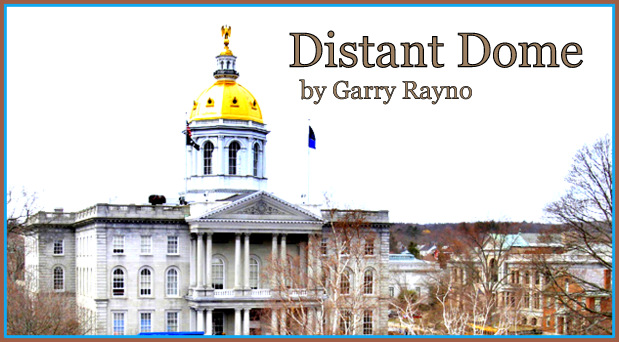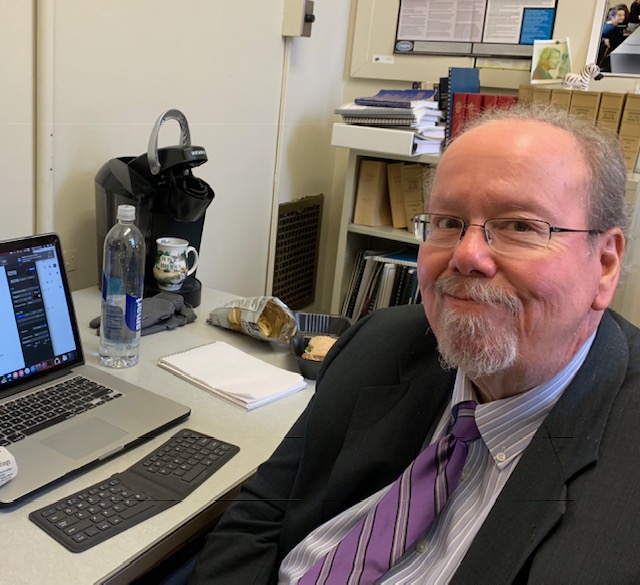
By GARRY RAYNO, Distant Dome
The long battle over equitable education funding does not end with the two decisions released last week.
Rockingham County Superior Court Judge David Ruoff ruled the state needs to pay a higher percentage of public education costs and its methodology for administering the statewide property tax makes it unconstitutional.
Those are the two latest decisions resulting from suits challenging the state’s education funding system dating back 30 years to the Claremont education lawsuit.
The state Supreme Court originally ruled the state’s children had a fundamental right to an adequate education and the state had to pay for it.
Several years later, the same court ruled that depending on local property taxes with widely varying rates to fund the bulk of public education was unconstitutional under the “proportional and reasonable” constitutional clause on taxes.
While a solution may appear simple — find a revenue source with one rate for all — it is instead a political, high-voltage, live-wire act around the State House that lawmakers so far have avoided at great cost to local property taxpayers.
And while many expect the issue to be hotly debated in the upcoming session given the rulings, one of the cases Ruoff ruled on is not settled yet and still has more intricate and unsettling issues to resolve.
However, the plaintiffs in that case, Steven Rand et al vs the State of New Hampshire, filed a motion the day after Ruoff ruled seeking a partial judgment on one of their claims they say he settled in the Conval School District decision.
They contend he already determined that the cost of an adequate education per pupil is at least $7,356, not the $4,100 the state allocates, meaning the difference between the two figures is funded by local property taxes with widely varying rates, which is unconstitutional.
The motion filed by attorney Natalie Laflamme, quotes Ruoff’s order that “the evidence at trial overwhelmingly established that no school could provide the opportunity for an adequate education if it had to rely solely on the base adequacy aid from the State.”
“In other words, the State is not meeting its constitutional duty to fund an adequate education, and that duty is necessarily downshifted to local communities,” Laflamme writes.
The plaintiffs seek a declaratory judgment from the court: “The State does not currently guarantee funding sufficient to cover the cost of an adequate education. As a result, New Hampshire must rely on local school taxes to bridge the gap. These local school taxes violate Part II, Article 5 of the New Hampshire Constitution because they are not uniform in rate.”
The filing also notes the plaintiffs do not agree the minimum funding level set by the court is sufficient and would like to proceed to trial on that issue as well as whether differentiated aid is sufficient in the state funding plan.
Differentiated aid is the additional money districts receive for students in poverty, special education and English language learners, as well as other programs seeking to help the most needy school districts.
While the plaintiffs would like to go to trial on those issues, lawmakers are more apt to say the issue is not settled yet and no action should be taken until it is settled.
The minimum per pupil cost established by Ruoff will cost the state more than $500 million, which is less than the revenue the state has given up in recent years by cutting business tax rates, as well as phasing out the interest and dividends tax and dropping the rooms and meals tax.
Ruoff was careful to say the final decision on the state’s obligation is up to the legislature and governor, but he set the minimum.
Gov. Chris Sununu noted New Hampshire is among the top states in funding public education. “Today’s decision is deeply concerning and an overreach into a decades-long precedent appropriately placed in the hands of our elected representatives in Concord,” he said in a statement.
New Hampshire ranks ninth overall in per pupil expenditures, however, it ranks 49th out of 50 states for the state’s share of total revenue to cover public education costs and that is why these lawsuits continue to be filed, not the total amount of spending on public education.
The state claims it pays about 21 percent of the cost of public education which totaled $3.64 billion for the 2021-2022 school year. The state’s estimate includes the $363 million raised through the Statewide Education Property Tax, that is still a property tax paid locally.
Local property taxes and the statewide property tax collected for the same period totaled $2.6 billion or 71 percent of the total spending.
While the statewide property tax is supposed to have one rate for all, it effectively does not due to allowing property wealthy communities to retain excess money to help offset the local education tax rate or to have the Department of Revenue Administration set a negative local education rate to offset a community’s state property tax obligation if they have no or few students in school.
Ruoff agreed with the Rand plaintiffs that as currently collected the statewide property tax is unconstitutional.
The state’s education funding system was unconstitutional 30 and more years ago and it is unconstitutional today because it relies on local property taxes with widely varying rates to fund a good percentage of the state’s obligation to provide an adequate education.
What that does, as the Education Funding Commission noted in its report in 2020, is sentence property poor communities to an education system that does not deliver the same opportunities that students from property wealthy communities find routine.
In other words, it is not the amount of money New Hampshire spends on public education, it is how it is distributed that is at issue and what makes the system so inequitable to both students and property taxpayers.
The consultants for the Education Funding Commission set the per pupil cost at about $9,900, which Ruoff said he thought was about right when the Conval trial ended, but later set a more conservative number as a minimum baseline leaving the final figure to the legislature.
The consultants also recommended a statewide property tax to redistribute the wealth to give all school districts an opportunity to meet average state outcomes for students.
The commission did not want to weigh in on that suggestion given the uproar the statewide property tax caused when it was first enacted after the Claremont II decision.
Since the first Claremont decision, the question has not been finding more money for public education, but how much the state will contribute and how it raises the money.
Since that time, politicians have made public education funding a spending issue when no court decision or ruling has said more money needs to be spent.
Instead most court decisions have put the onus on the state contributing more of its share of the cost of public education in a way that helps communities least able to provide their children with an adequate education.
And Ruoff’s rulings and the current unsettled case raise the same question. The question is how to distribute the money in an equitable manner for both students and taxpayers so a student’s zip code does not determine the quality of his or her education.
Ruoff was right when he wondered in his ruling if politics impeded the legislature from meeting the state’s obligation.
“The court is . . . cognizant that school funding is a complicated and politically-charged issue, with a history that suggests some level of judicial intervention is now necessary,” Ruoff wrote in his Conval decision. “This . . . calls into question whether the politics of this issue are impeding the State’s constitutional obligation to fully fund the opportunity for children in this state to receive an adequate education. That ends today.”
This is not the first time the issue has been raised, and it certainly will not be the last.
But rather than a spending issue, the people of New Hampshire and its property taxpayers need to realize it is a question of the political will necessary for the state to pay its fair share of public education costs and stop shifting its obligation onto the backs of local property taxpayers.
Garry Rayno may be reached at garry.rayno@yahoo.com.
Distant Dome by veteran journalist Garry Rayno explores a broader perspective on the State House and state happenings for InDepthNH.org. Over his three-decade career, Rayno covered the NH State House for the New Hampshire Union Leader and Foster’s Daily Democrat. During his career, his coverage spanned the news spectrum, from local planning, school and select boards, to national issues such as electric industry deregulation and Presidential primaries. Rayno lives with his wife Carolyn in New London.






